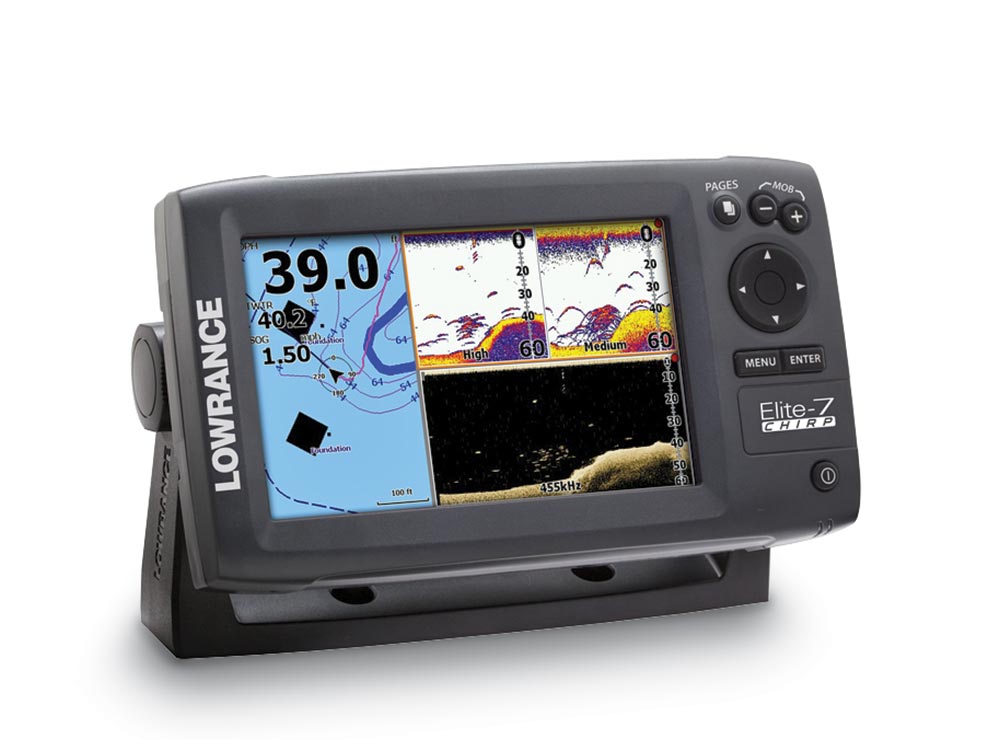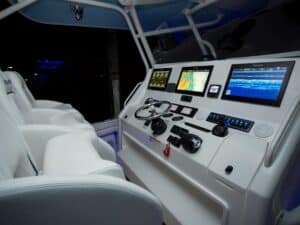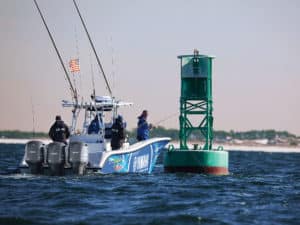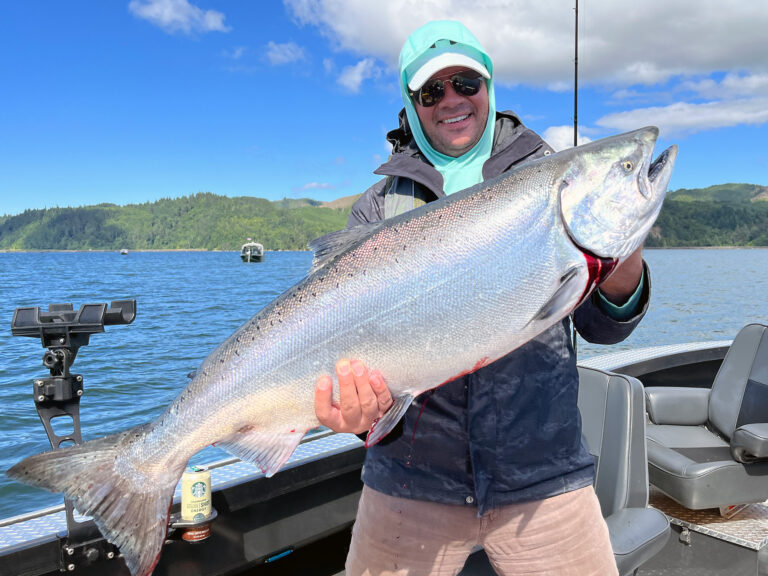The word “CHIRP” began infiltrating most dockside and marina chatter about four years ago. CHIRP — compressed high-intensity radar pulse — first described a class of high-dollar recreational sounders initially developed for deepwater fishing and superior target discrimination.
But starting last year, smaller, less-expensive CHIRP fish finders began coming to market. They cost about a 10th to a quarter of the price of the earlier units (with transducers). Even in the lightning-fast world of marine electronics, prices don’t drop that quickly.
High or Low
So what’s the difference between the CHIRP capability found in $500 to $800 multifunction displays — such as the Raymarine Dragonfly, Lowrance Elite-5 CHIRP and Garmin’s smaller xs machines — and the original $2,000 black-box add-ons like Simrad’s BSM-2, Furuno’s DFF1-UHD, Garmin’s GSD 26, Raymarine’s CP450C and Humminbird’s new SM3000?
Chiefly: depth and power. Higher-priced CHIRP units and their higher-priced transducers can transmit signals across one to two frequency ranges (ranges that start at 28 to 60 kHz, for instance, to a high of 130 to 210 kHz) with 1 to 3 kW of power, reaching depths to 10,000 feet. These units pick apart the entire water column and operate more effectively than non-CHIRP versions at higher boat speeds.
Lower-priced 300- and 600-watt units usually send signals through just one frequency range for traditional sonar. Raymarine’s Dragonfly MFD and CP100 black box, for instance, chirp through the 170 to 230 kHz range for fish finding to depths of 600 feet. (Additionally, they use CHIRP DownVision imaging to better locate structure, sweeping from 320 to 380 kHz frequencies.)
“With the higher-end CHIRP sonar, you can dial in the frequency too,” says Raymarine marketing manager Jim McGowan. “So they’re kind of programmable.” These top units usually can display side-by-side views from both CHIRP channels simultaneously as well.
Completing the market, marine electronics companies have also released CHIRP multifunction displays, black-box add-ons and transducers in a middle price range. These bridge the gap and offer amenities such as side and down imaging, touch screens, and networking capabilities — including Raymarine a68 and a78 units, Simrad/Lowrance SonarHub, and Garmin 840xs and 1040xs.
Dialing In
With such a dizzying choice of units (not to mention transducers), why should anglers consider CHIRP-capable units over traditional digital sounders? Whatever its price or ability, a CHIRP unit’s basic function gives anglers a clearer picture of the fish they see — particularly at depths below 200 feet, Lowrance says.
Let me clarify: The CHIRP unit might not find or see more fish, but those fish it does find will display in better detail (helping you to distinguish between fish and noise). Fish lurking near bottom, for instance, will stand out better, and those in a school will show more distinctly. The nature of the CHIRP signal also improves the unit’s performance in noisy conditions such as when boat speed increases.
CHIRP differs from traditional sonar in an overarching way. Think of traditional sonar as sending out a single drumbeat and then waiting for its echo to bounce back. CHIRP sonar sends out a drum roll.
Traditional sonar equals one single pulse at one frequency. CHIRP equals a sweep pattern of sound within a long-duration transmit pulse across a frequency range. The sound energy that goes into the water from CHIRP is many times greater than that emitted by traditional sonar. A CHIRP unit simply sends and receives a ton of information.
Today’s sounders use enhanced digital-signal processing to pick apart the vast information a CHIRP return provides. With improved signal-to-noise detection and other capabilities, these sounders deliver higher-resolution, better-quality screen pictures.
Bottoms Up
Transducers comprise the second vital piece of the CHIRP system. Airmar Technology builds a wide array of options, from lower-priced transom-mount CHIRP products to wider-beam transducers and through-hull behemoths with 25 ceramic elements.
However, Raymarine has started building its own lower-priced CHIRP transducers, and Lowrance says that its SonarHub black box and new Elite-5 and Elite-7 CHIRP multifunction displays can transmit a sweep pattern through a traditional transducer, such as the company’s own 50/200 or 83/200 kHz Hybrid Dual Imaging transducers (which offer the traditional low/high transducer, and a 455/800 kHz imaging transducer in one).
“We’re getting two CHIRP ranges out of a single transducer,” says Lucas Steward, Simrad/Lowrance sonar product manager. “With the 83/200, you get medium CHIRP (with a 30-degree cone) for wide coverage and high chirp for awesome bait tracking. With 50/200, you get the lower range (50 kHz) for better depth.”
The main differences Airmar sees between using a CHIRP transducer and chirping on a conventional transducer are noise and range resolution, says Jennifer Matsis, Airmar’s vice president for sales and marketing. CHIRP transducers reject the flow of noise better, particularly as boat speed increases. They also separate targets more distinctly.
Traditional transducer signals also peak at 50 and 200 kHz. When a CHIRP signal transmits on either side of that peak (through a traditional transducer), the energy is mostly wasted, Matsis says.
“If you look at the formulas, that’s true,” Steward says. “The more bandwidth you have, the better it is supposed to look. But there’s an on-the-water aspect, and I have not been able — in most fishing situations — to see a huge difference.”
With Lowrance’s HDI transducer, anglers also get DownScan Imaging, Steward points out.
In the end, making the CHIRP choice is unique to the vessel and the fisherman. But the good news is, whether you fish bays and sounds or head offshore to deep-drop, you have electronics choices that can be dialed in to your needs. And that is sound science.
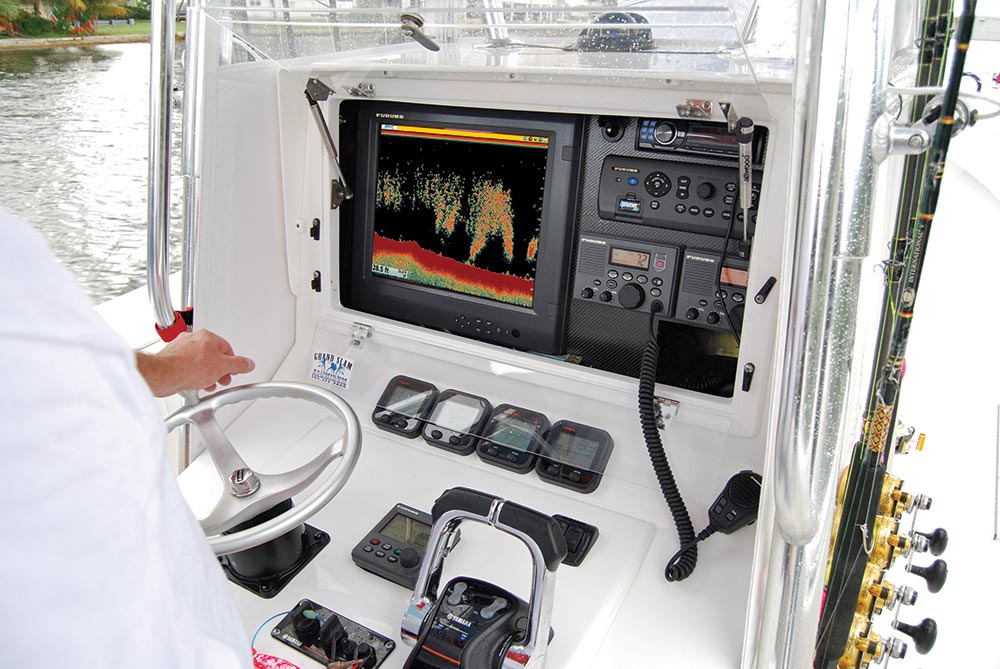
Furuno DFF1-UHD TruEcho CHIRP
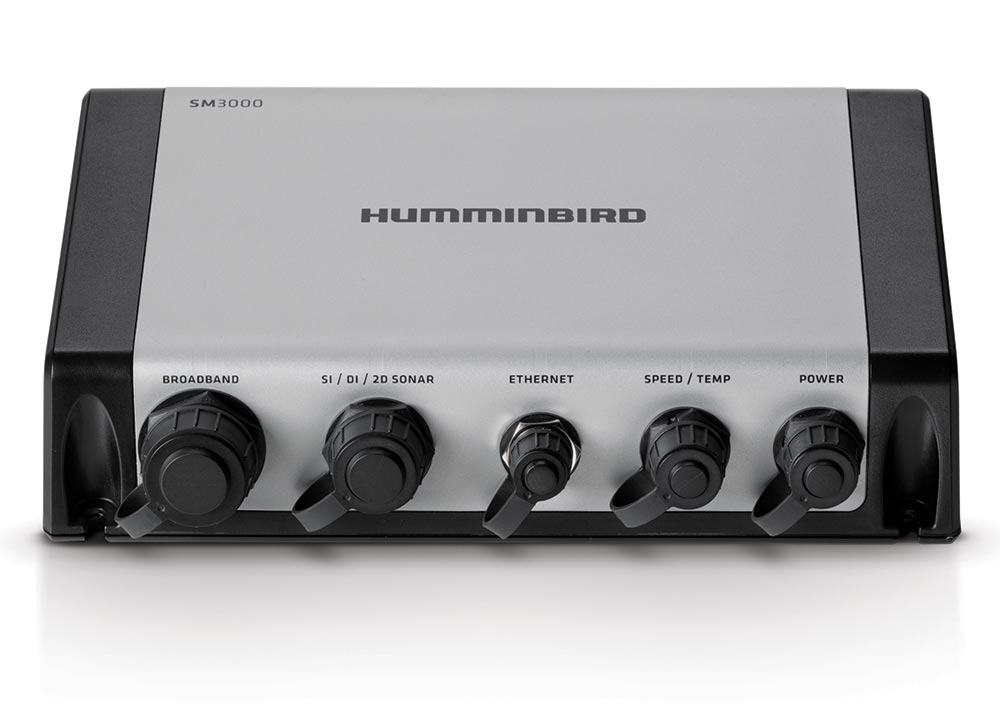
Humminbird SM3000 CHIRP
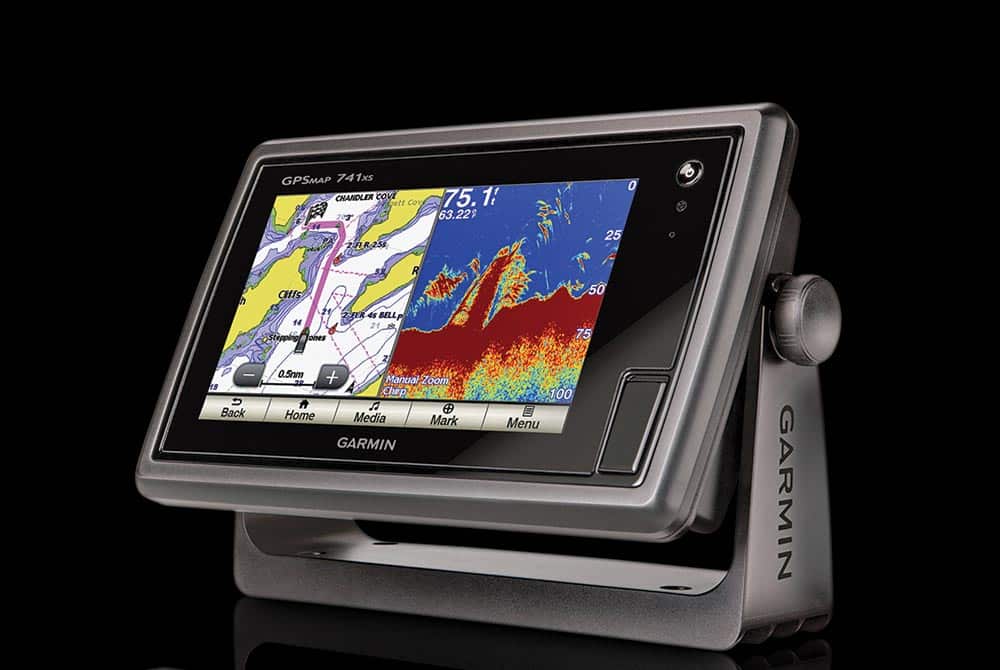
Garmin 741xs
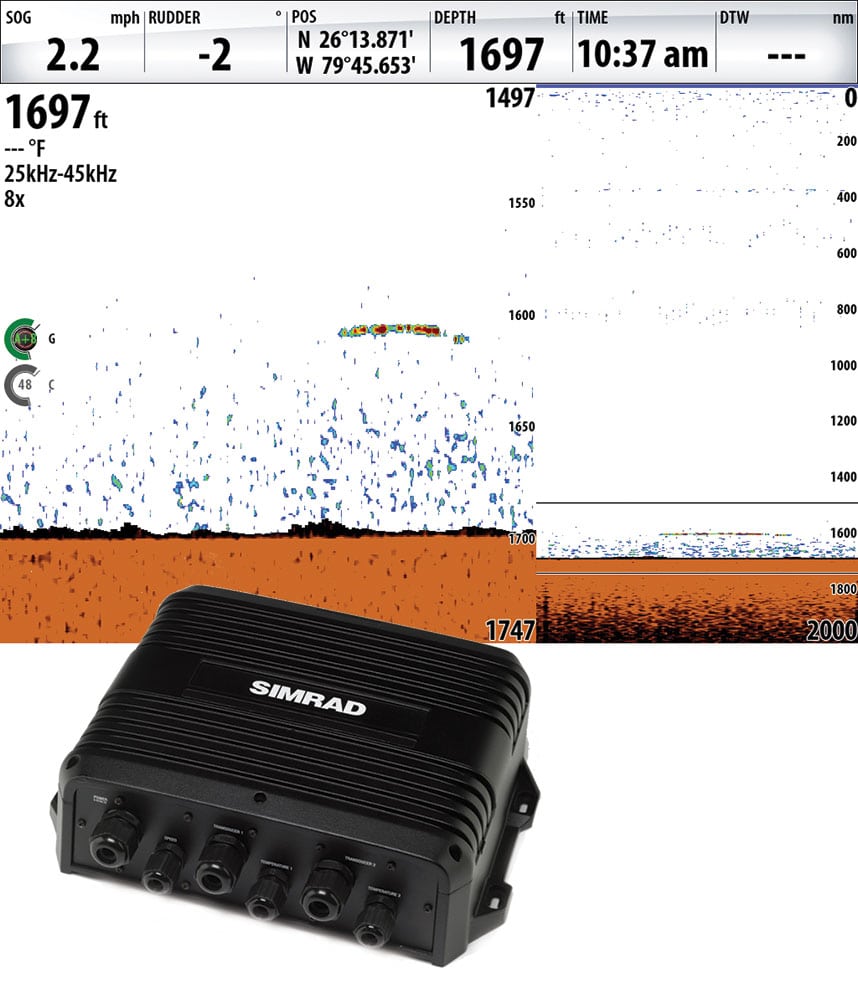
Simrad BSM-2 CHIRP
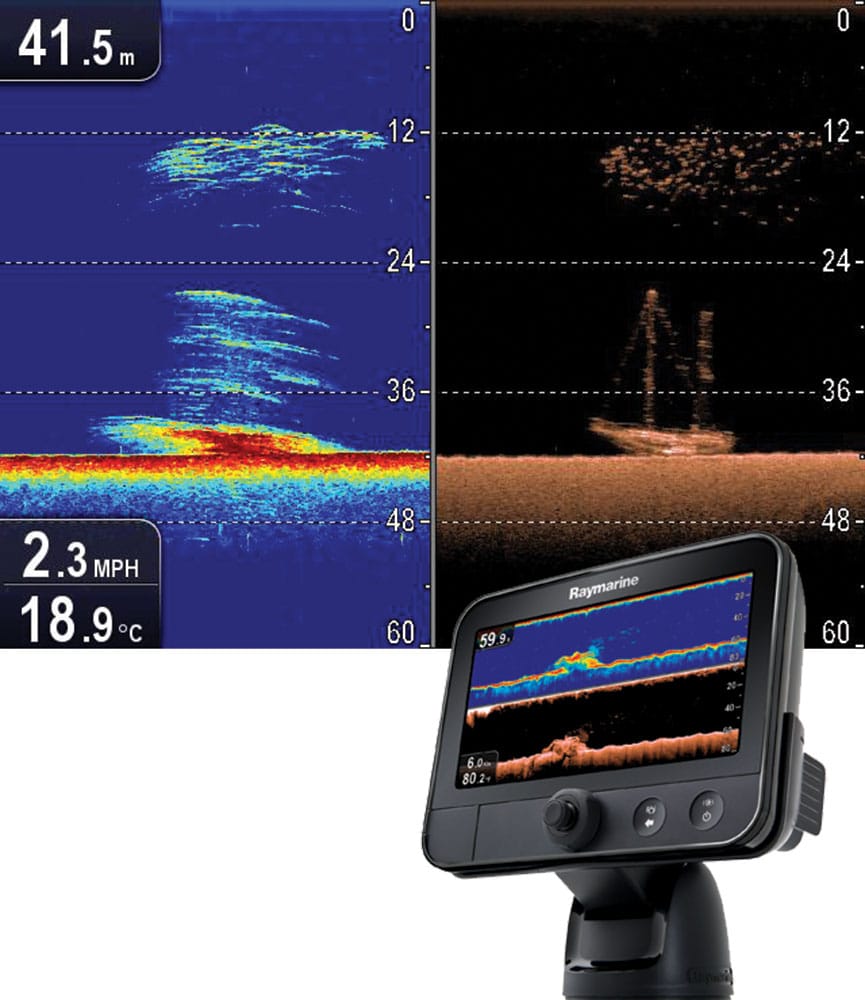
Raymarine Dragonfly CHIRP
